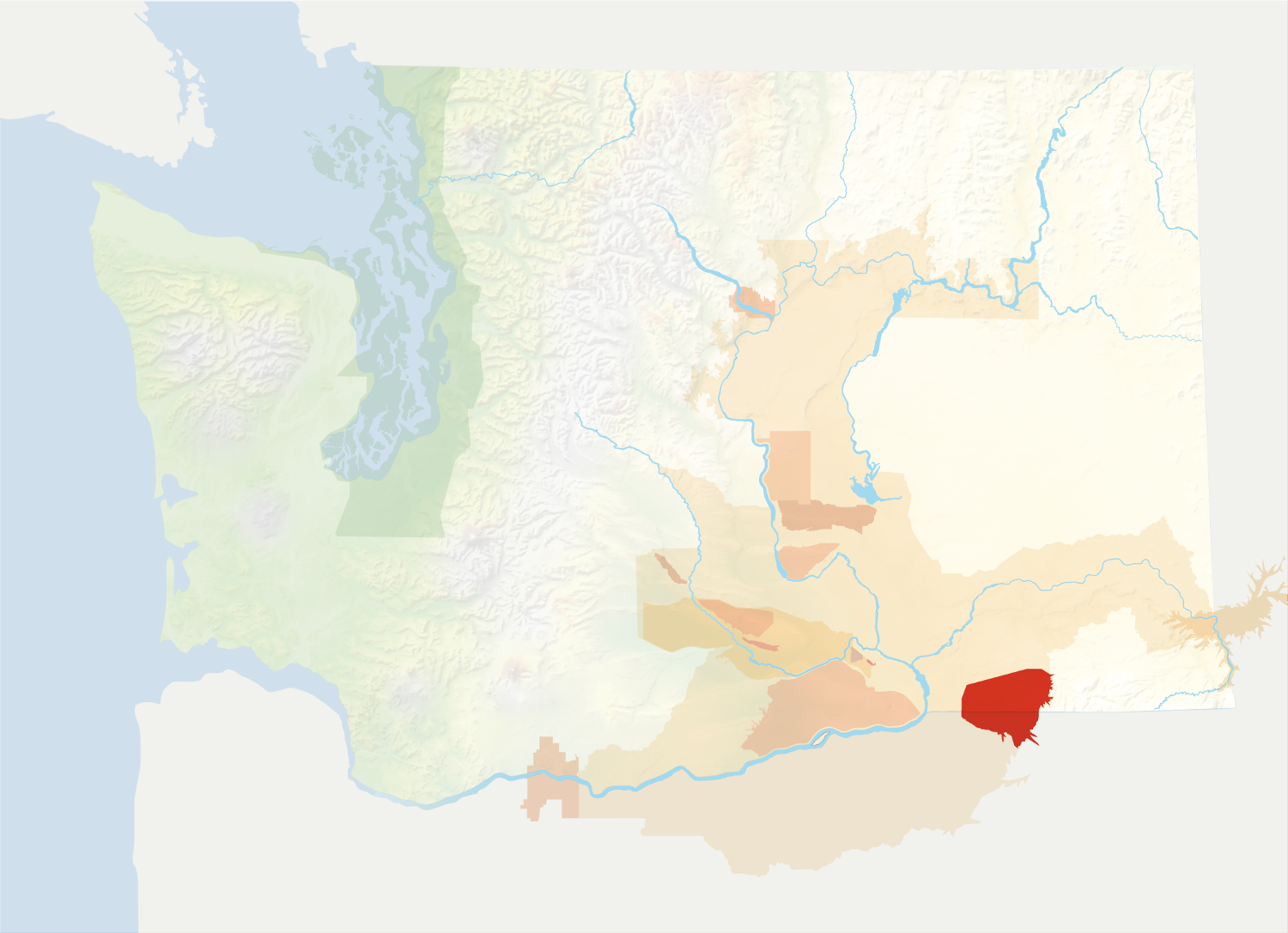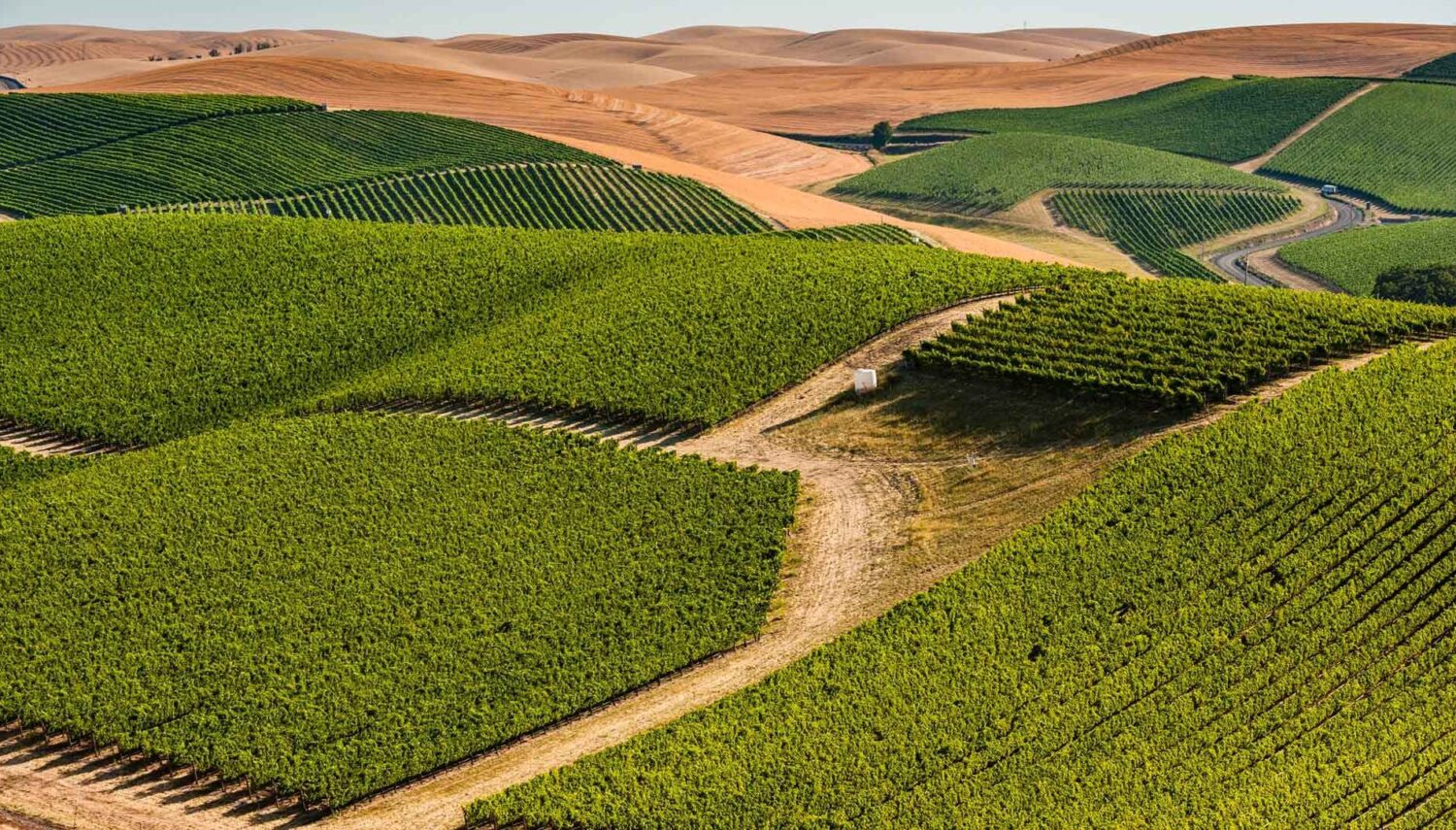Location: Southeastern Washington, northeastern Oregon
Designated: 1984
Total Size: 300,000 acres
Acreage Under Vine: Total vineyard acreage: 2,933 (1,186 hectares); Washington acreage: 1,672 (676 hectares)
Top Varieties: Cabernet Sauvignon, Merlot, Syrah
Soils: Sandy loess over Missoula Flood slackwater deposits and fractured basalt along with Freewater series cobbles
Average Annual Precipitation: 9-22 inches
Two Things to Know:
- Largest concentration of wineries in Washington and also some of the oldest.
- Diverse growing region with varied rainfall.
Located in south-eastern Washington and north-eastern Oregon surrounding the town of Walla Walla, Walla Walla Valley is a sub-appellation of the Columbia Valley. The name comes from a Native American term that means ‘many waters.’

Walla Walla Valley has the highest concentration of wineries in the state and is also home to some of Washington’s oldest wineries. The valley is a shared appellation with Oregon, with just over half of the planted acreage on the Washington side.
The valley, which is also a major wheat and onion producer, is a climatically diverse growing region. The appellation is also cooler and wetter than a number of Washington’s appellations.
Precipitation varies throughout the valley, from nine inches in the western part of the appellation and 22 inches at the eastern border, which stretches up into the foothills of the Blue Mountains. This allows a limited number of vineyards in the eastern section to dry farm—an extreme rarity in Washington.
Most soils are well-drained, sandy loess over Missoula Flood slackwater deposits and fractured basalt. Above 1,200 feet, the maximum height of the Missoula Floods, soils are simply loess over fractured basalt. An ancient cobblestone riverbed defines the area to the south, a sub-appellation called the Rocks District of Milton- Freewater AVA, which is located on the Oregon side of the valley. The area’s famous cobblestones absorb the sun’s heat, radiating it to the roots and grape clusters.
The valley’s diversity in climate and soils creates very different presentations in the wines from the southern part of the valley to the foothills of the Blue Mountains to the Mill Creek drainage to the areas to the north. Grape production is dominated by red varieties.
This is one of three AVAs that cross into Oregon, also known as cross-border AVAs.

